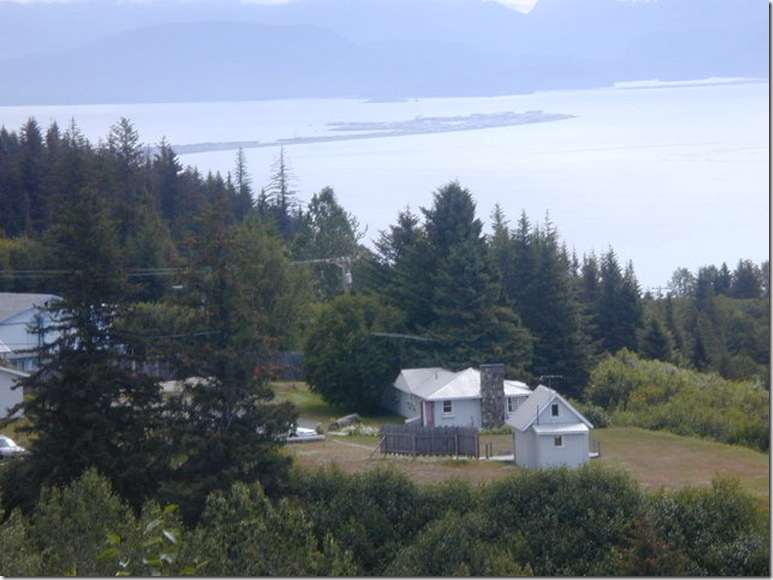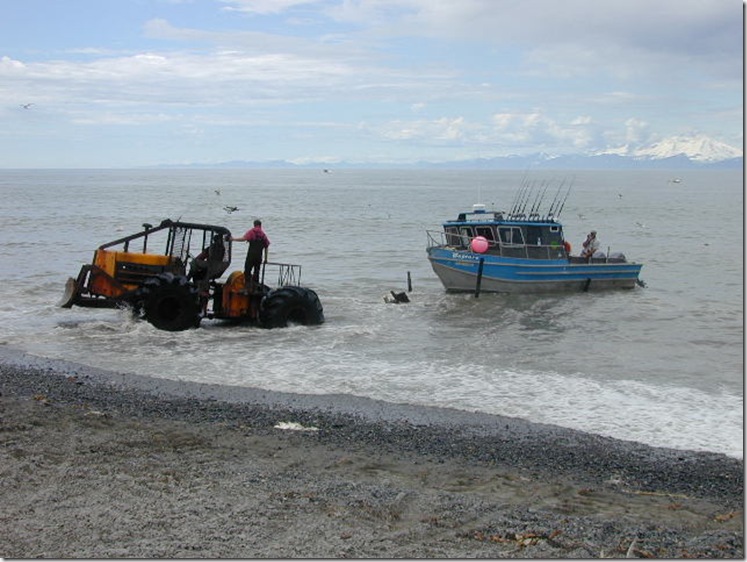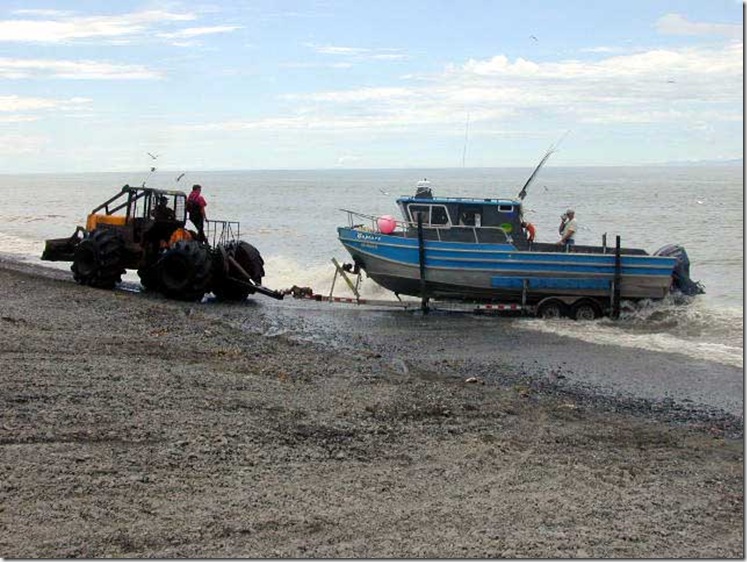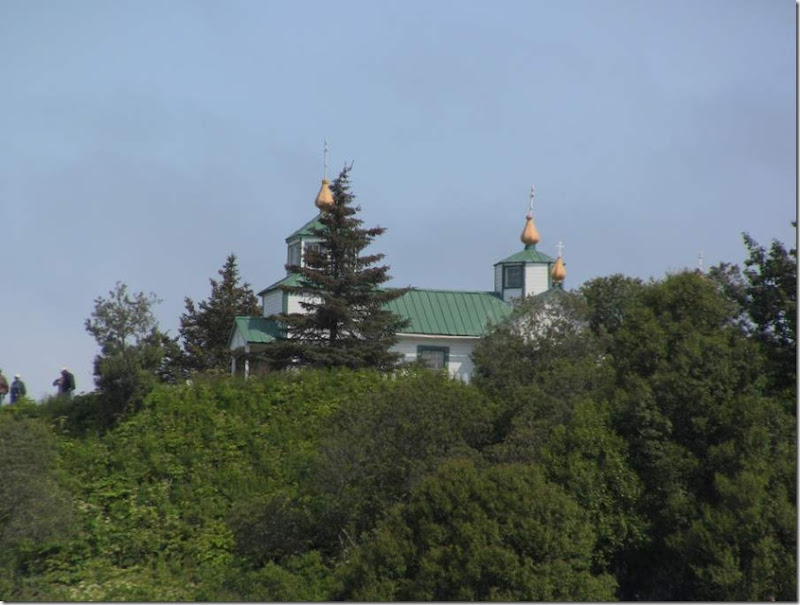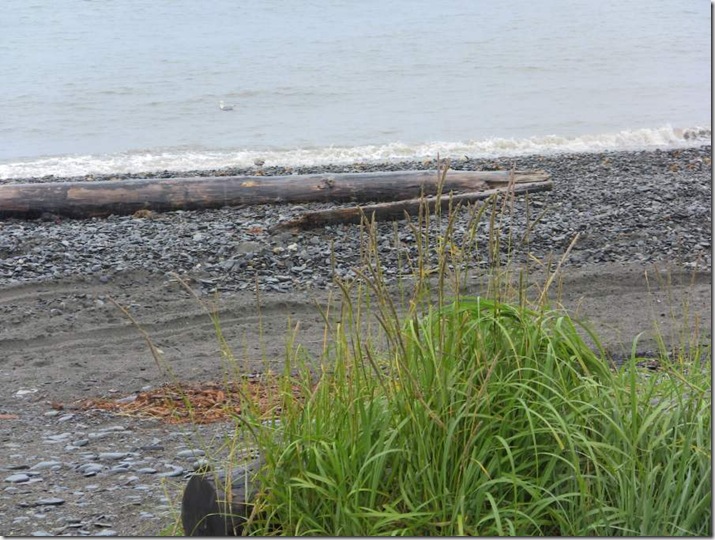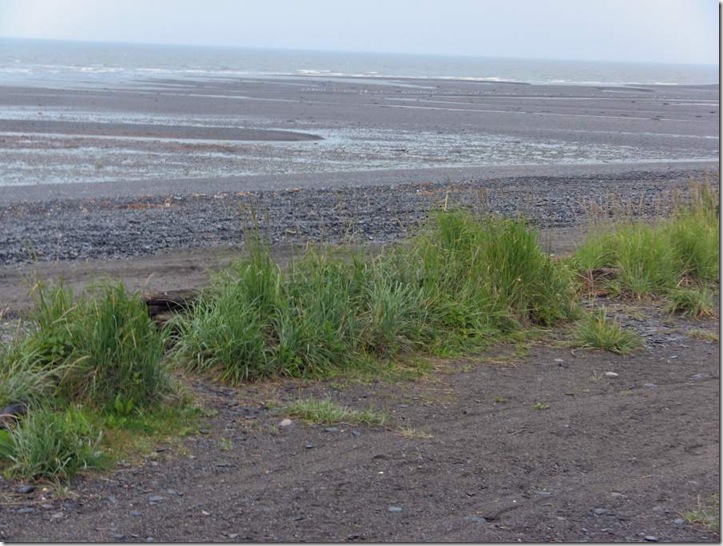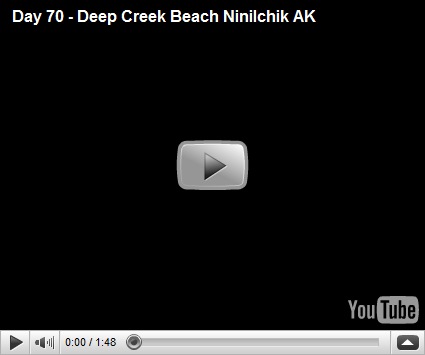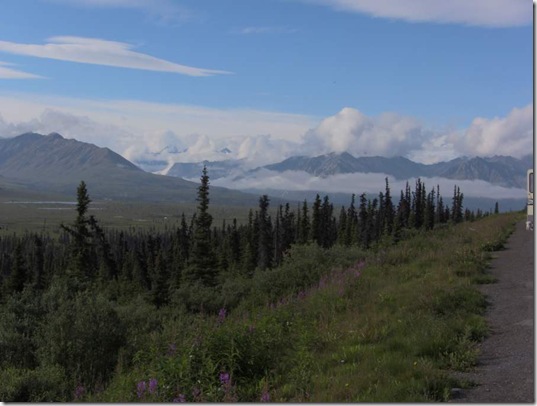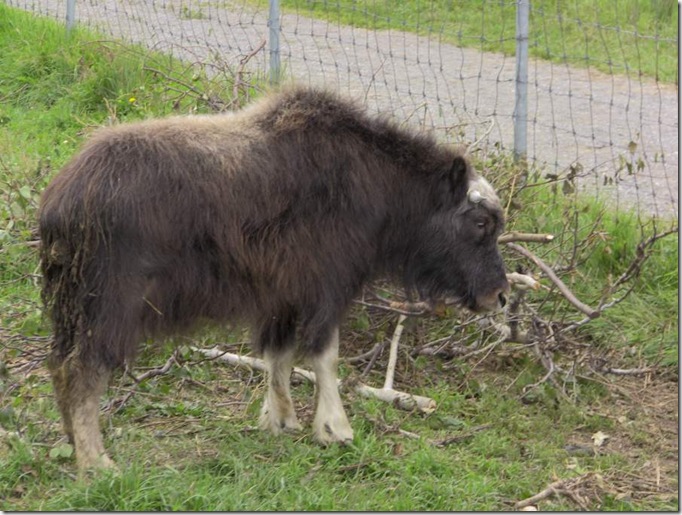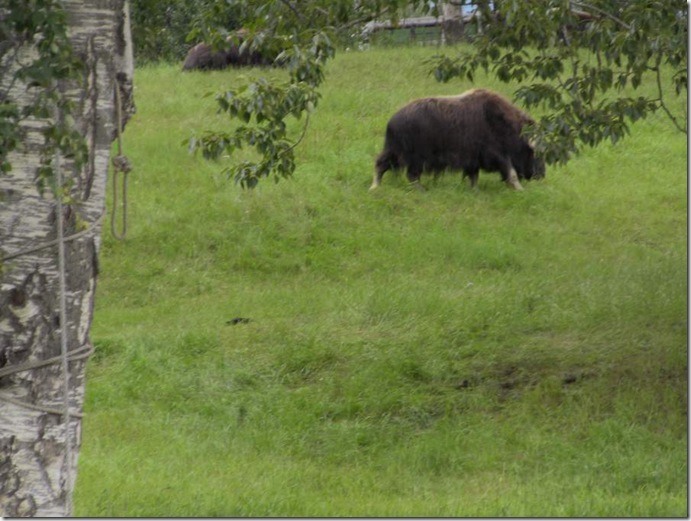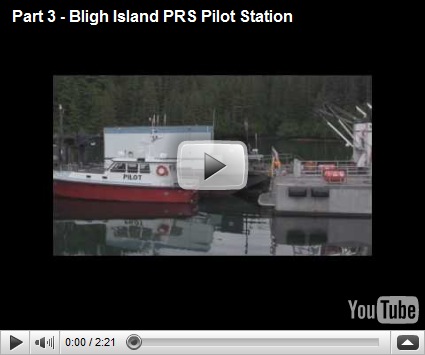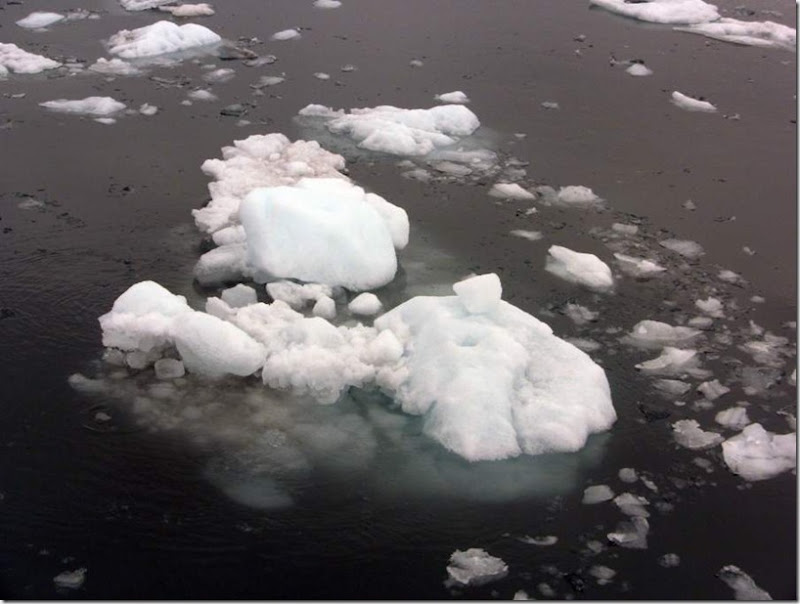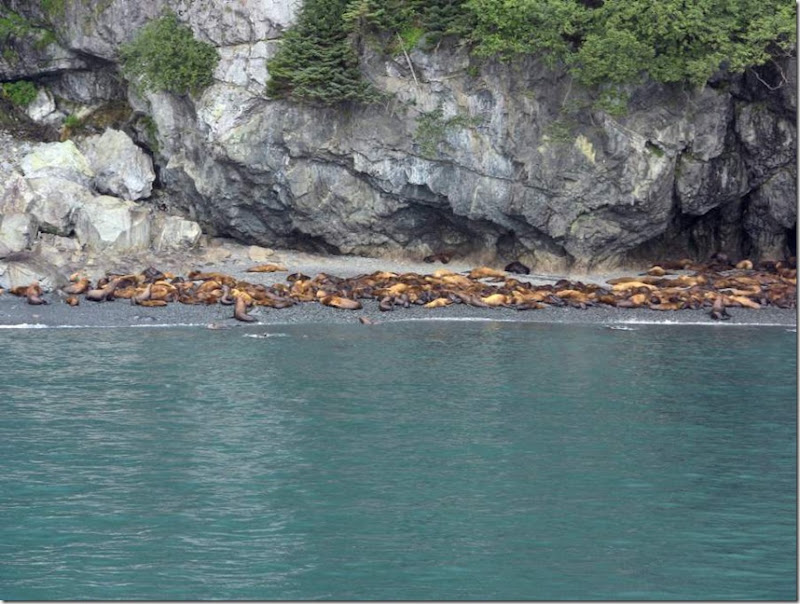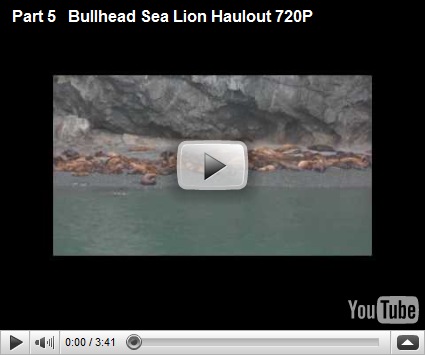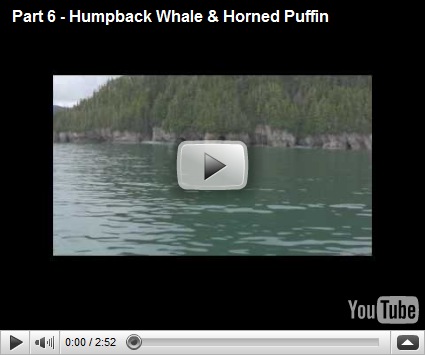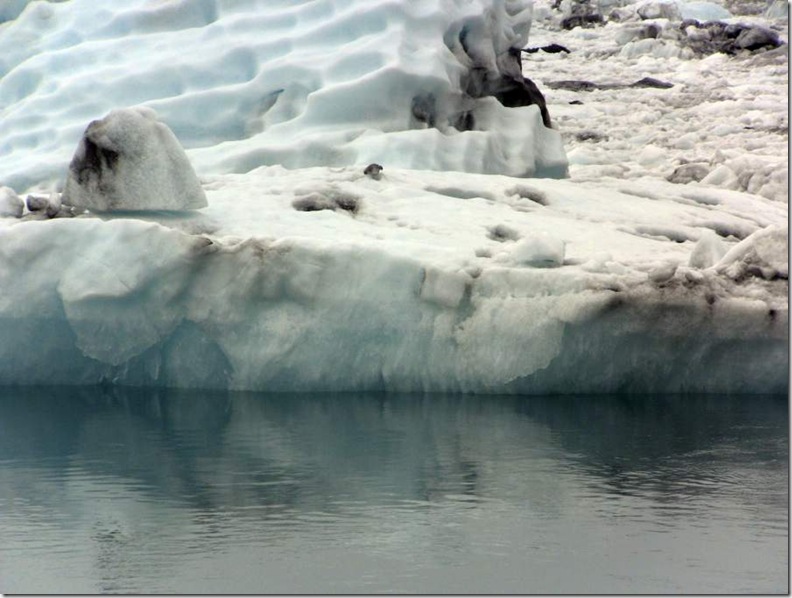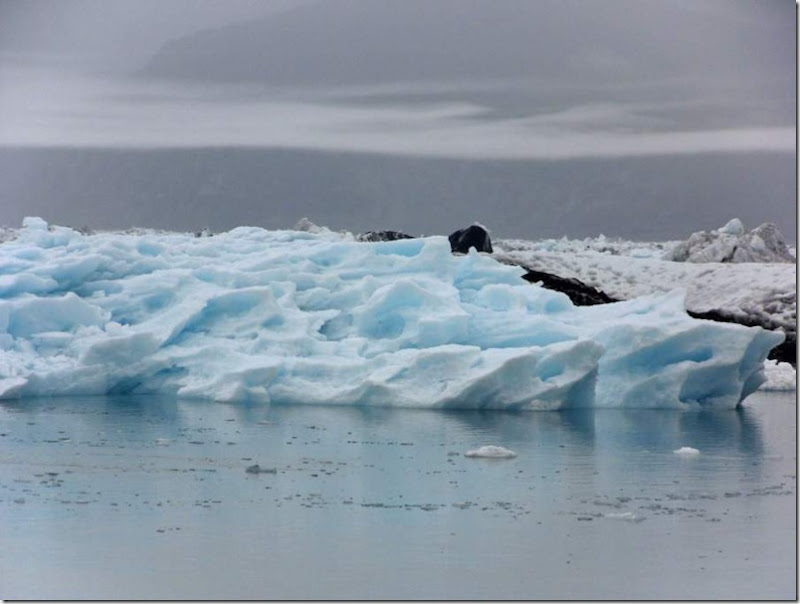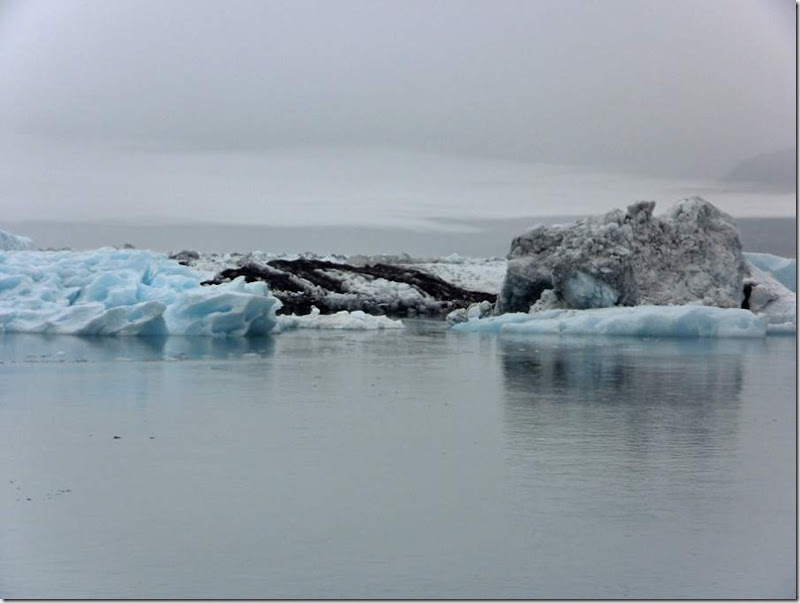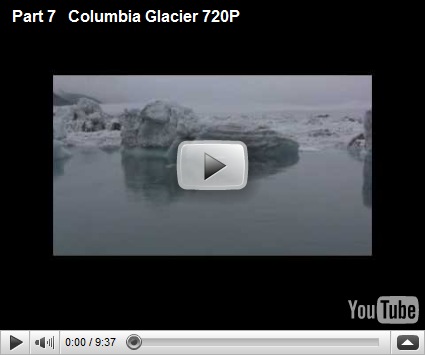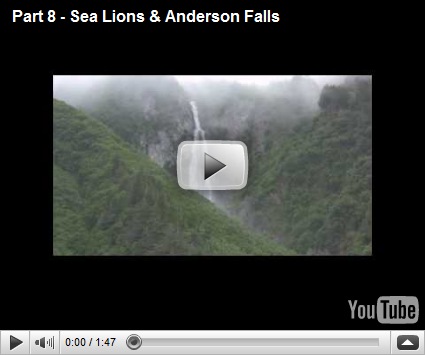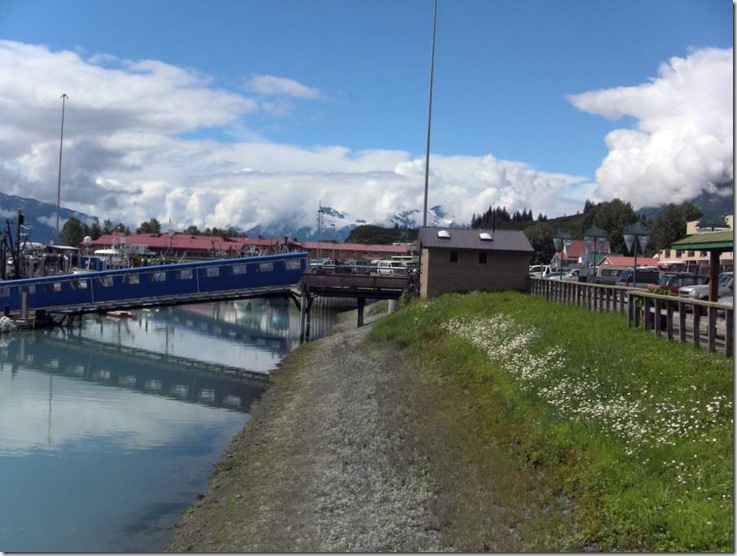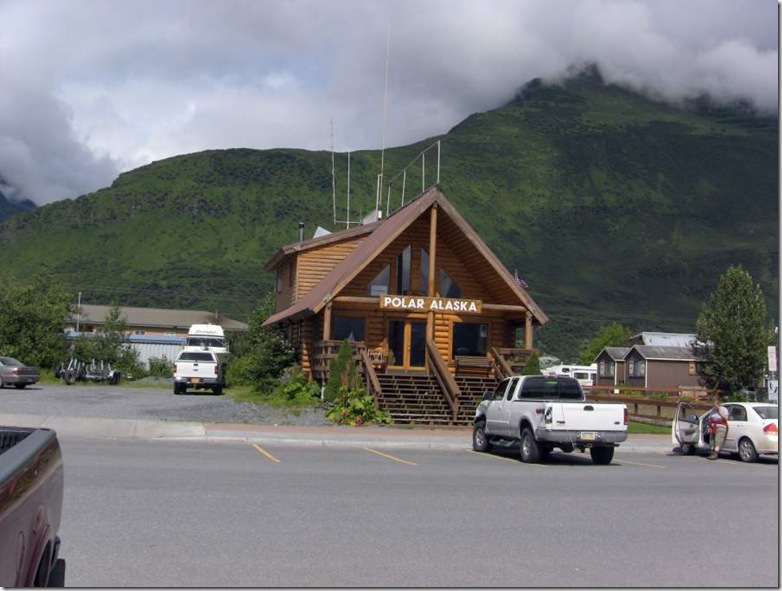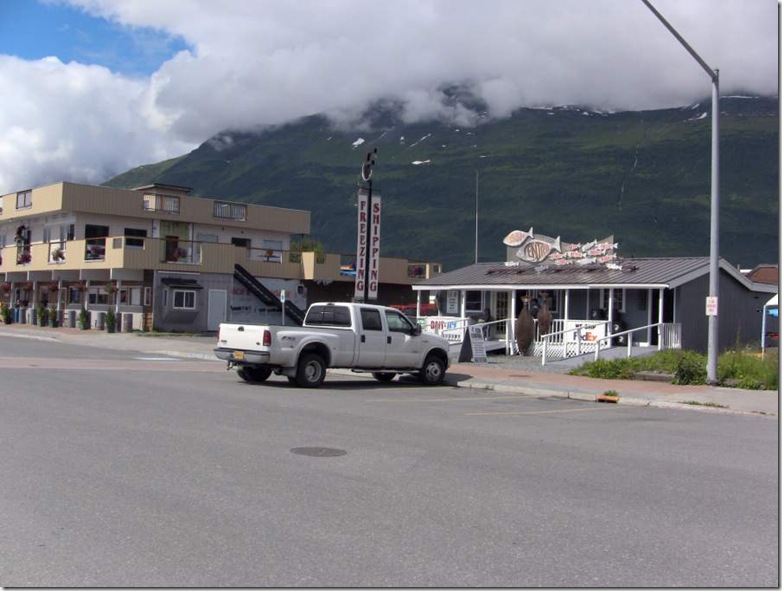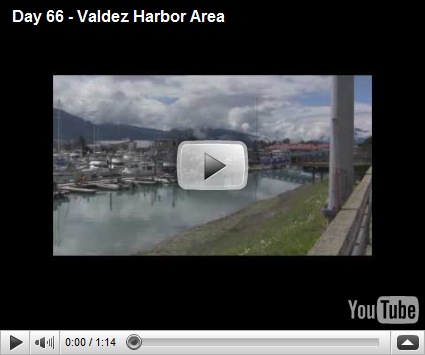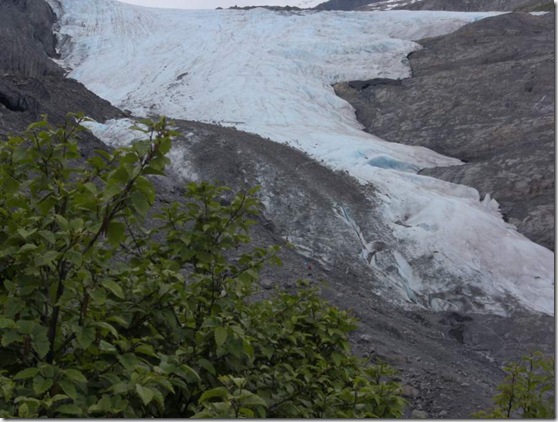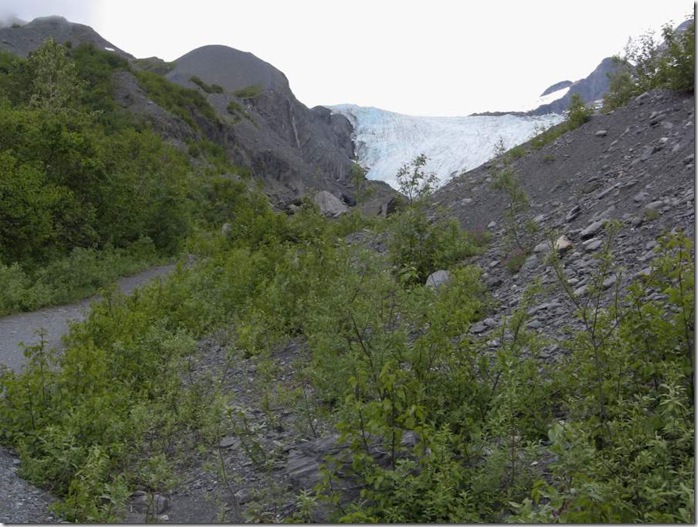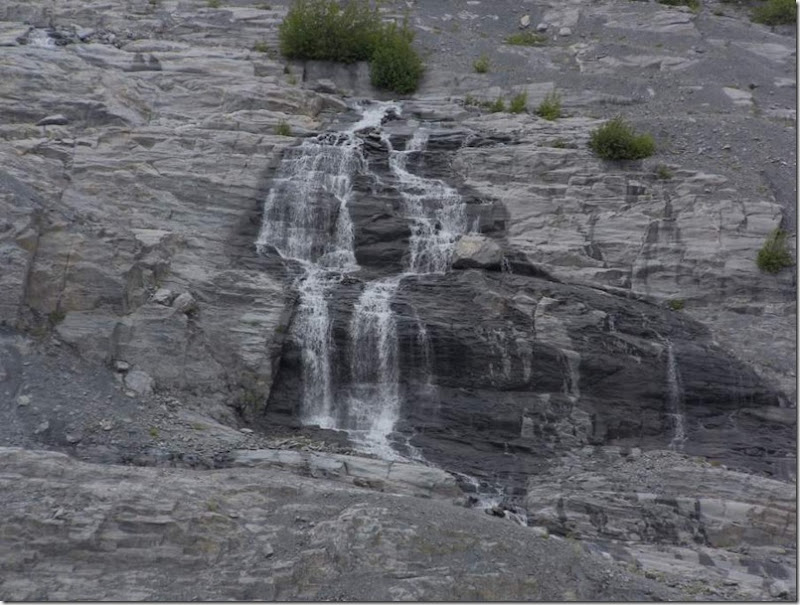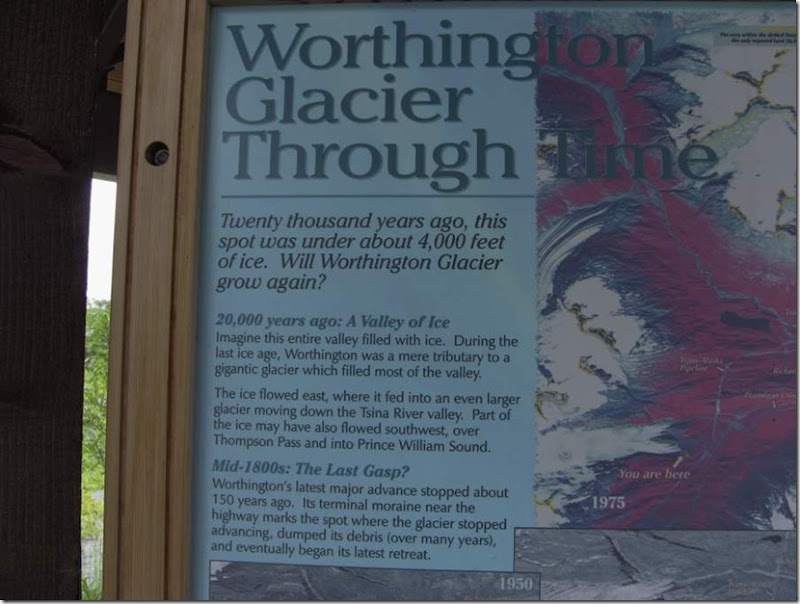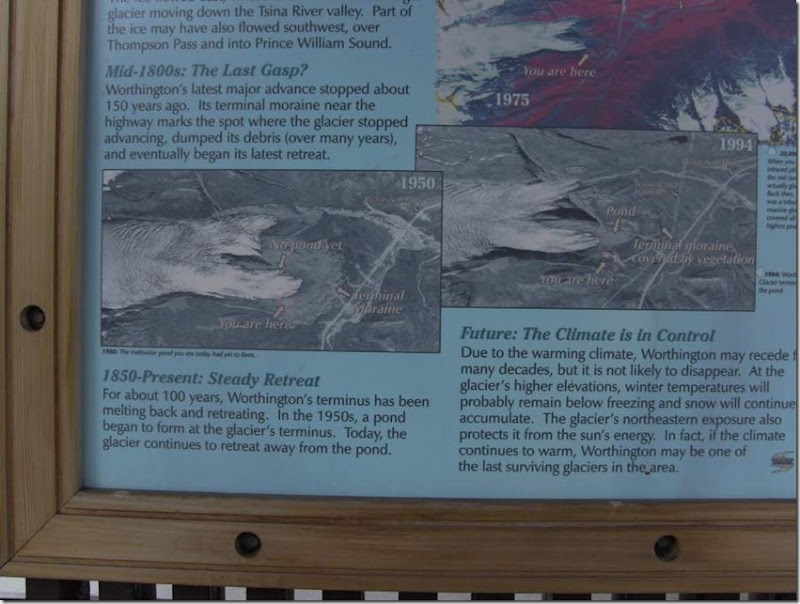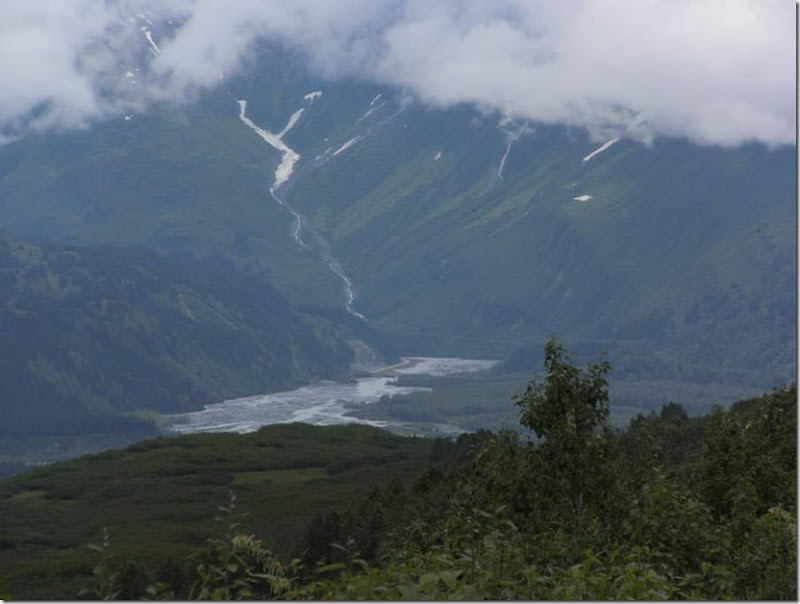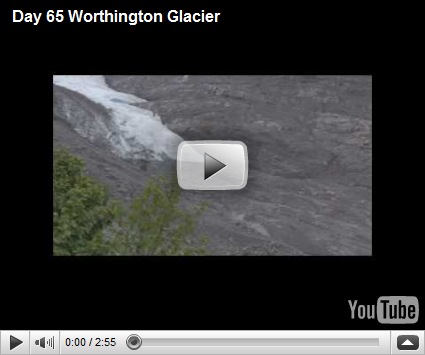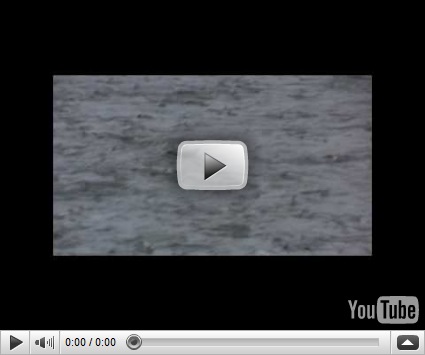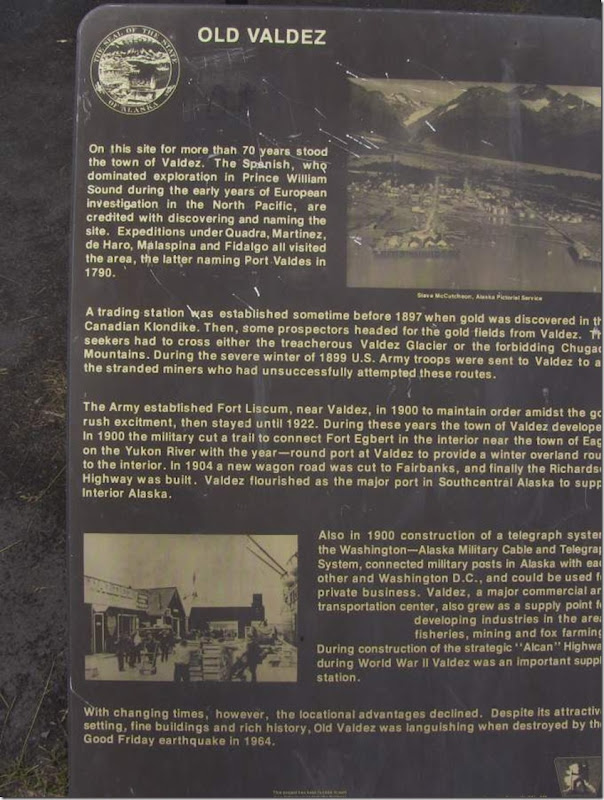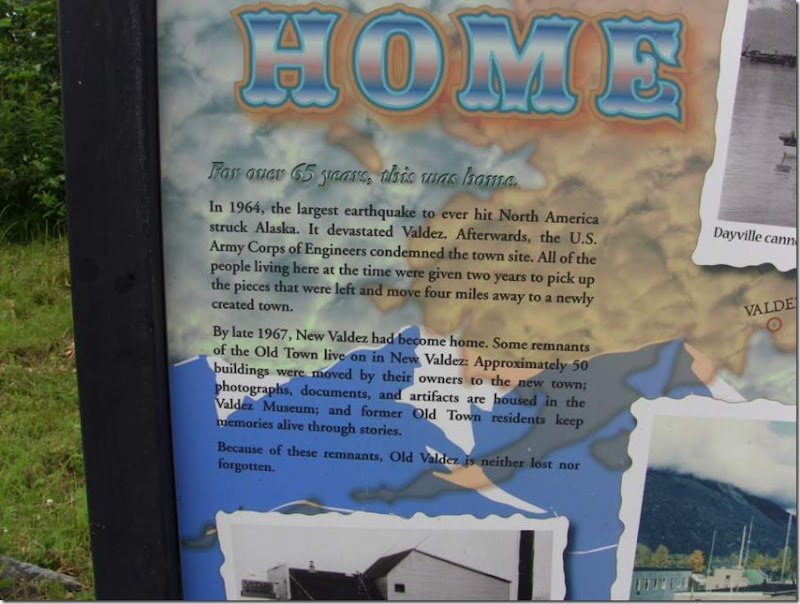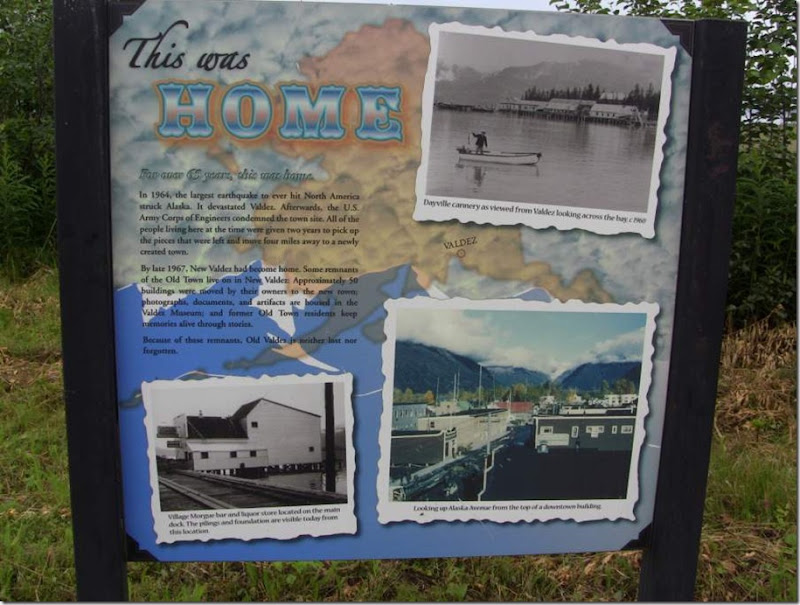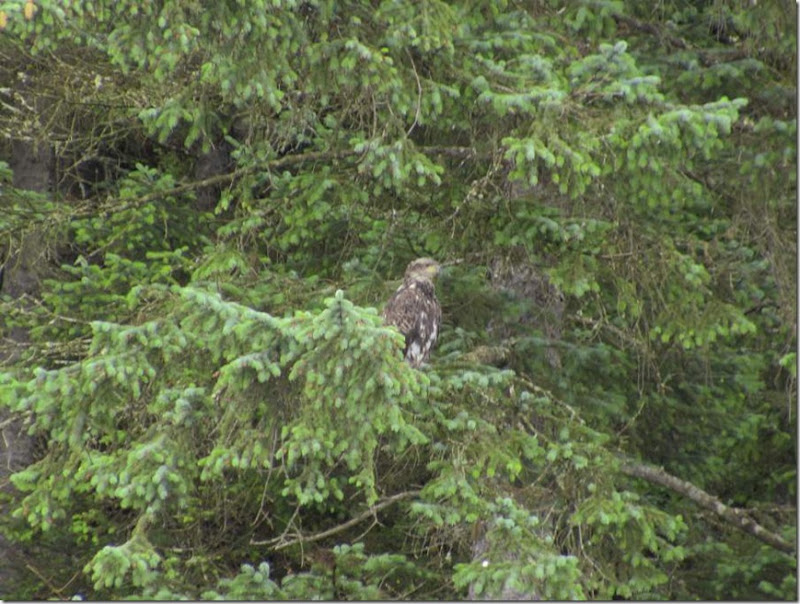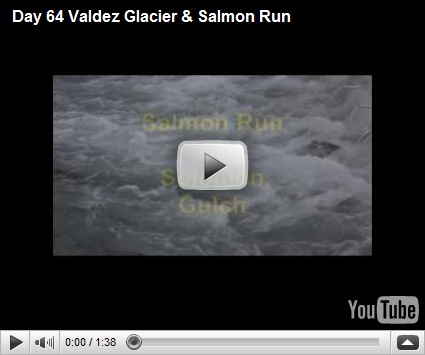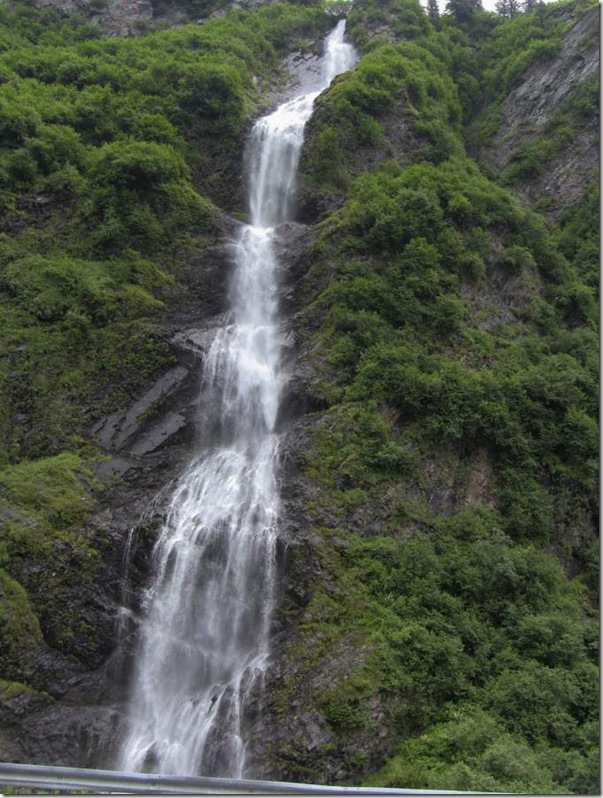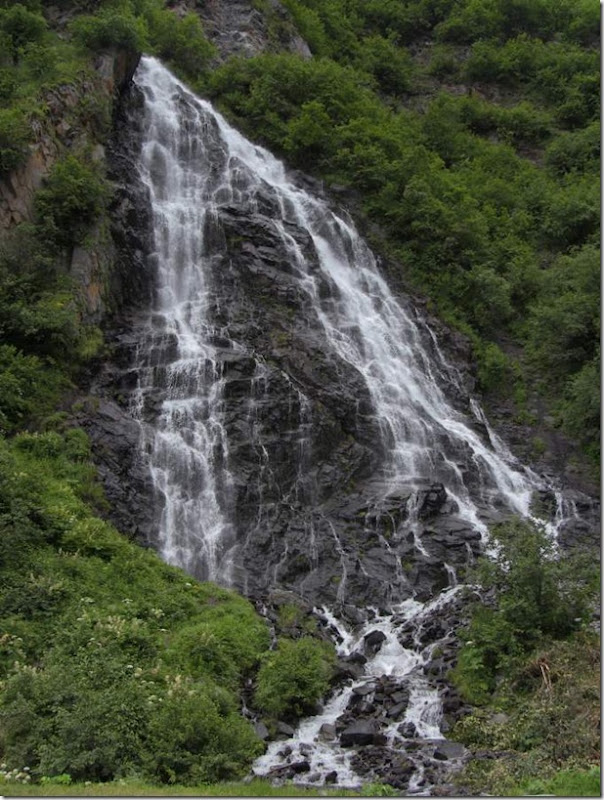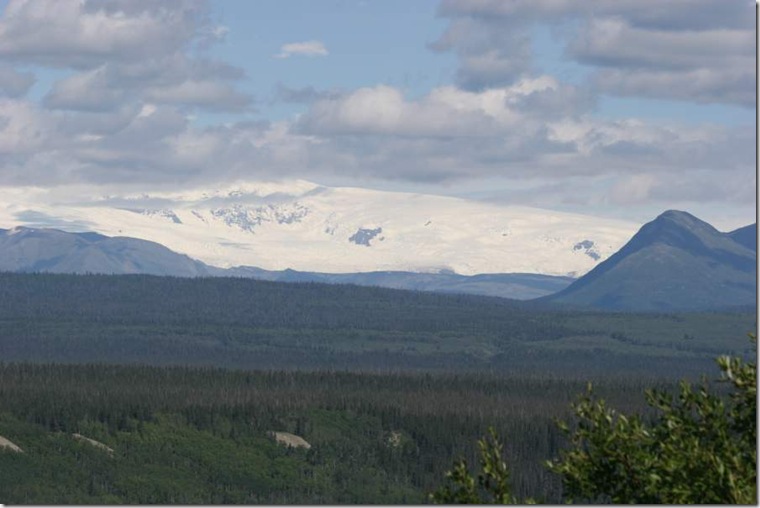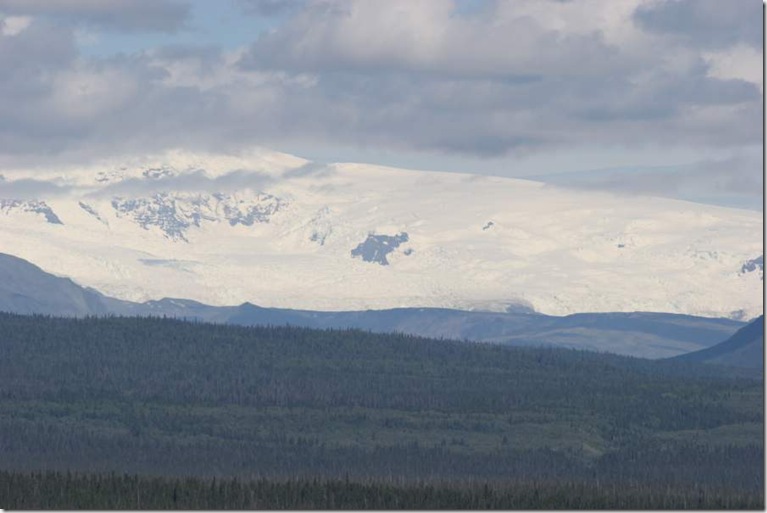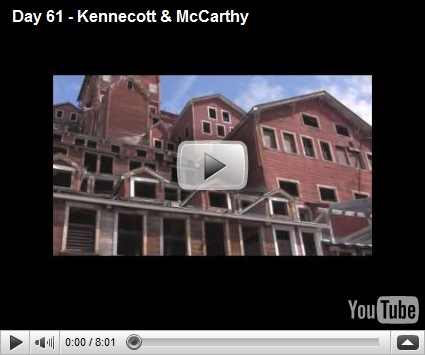In 1900 two prospectors, Jack Smith and Clarence Warner spotted a large green spot on the mountainside between Kennicott Glacier and what is now McCarthy Creek. The green patch turned out to be one of the richest deposits of copper ever found. Smith contacted Stephen Birch, a mining engineer to inspect their find. Birch was able to get the backing from the Guggenheim brothers and J. P. Morgan who bought the claims. In 1906 Kennecott Mines Company was formed. The mining company was supposed to take the name of the glacier which was named after Robert Kennicott, an early Alaskan explorer, but the company name was misspelled. The town and glacier are spelled Kennicott but the mines and company are spelled Kennecott.
The ore from mine needed to be transported to Tacoma Washington by the Alaskan Steamship Company for smelting. To accomplish this, a railroad needed to be built to the coastal town of Cordova. Michael J. Heney, a master railroad builder, was hired to build the Copper River Northwestern Railway. Construction began in the spring of 1908 at Cordova to the Kennecott mines, a distance of 196 miles. The CR & NW transported approximately $200 million of copper.
At its peak, the town of Kennicott had around 300 people in the mill camp and another 200 – 300 miners in the mines. The complex had a hospital, store, grade school, a dental office, and dairy along with others buildings needed for the mines operation. Foremen and higher workers were given company housing and allowed to have their families live with them. Lower workers were housed in bunk houses and could not have them families.
Once you have a railroad, other towns seem to spring up. McCarthy sprang up as a railroader’s town and a place for miners to have a bit of recreation. Restaurants, pool halls hotels, saloons, two newspapers, a dress shop, a photography shop, garage and auto repair shop, shoe store, hardware store that provided services to more than 800 people in the area.
In 1938 mining operations ceased due to the drop in copper prices. In November 1938 the last train left Kennicott for Cordova taking the remaining people with it. A few years later, the company gave the CR & NW right away to the federal government. It was given for the purpose of creating a public highway, a gift to the people of Alaska.
Kennecott sold their mining claim and all of the buildings to Consolidated Mining Company. Consolidated thought that they could surface mine but soon discovered it would not be profitable. Consolidated divided the claim into parcels and sold them. Today you will find many of the buildings; especially the old housing for the foremen and higher workers owned and occupied my private families. Also most of the land that was once part of the original claim is privately own. In 1998 the National Park Service bought the milling site and surrounding 3,000 areas of land which became part of the Wrangell-St. Elias National Park.
To get to Kennecott and McCarthy, one takes the highway to Chitina. Chitina is a small town on the where the Copper and Chitina Rivers converge.
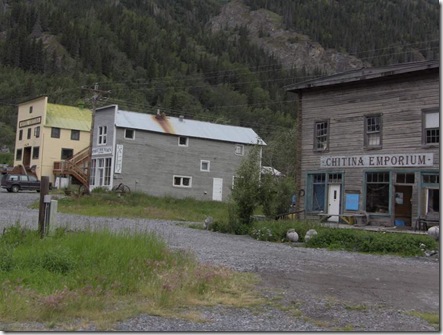
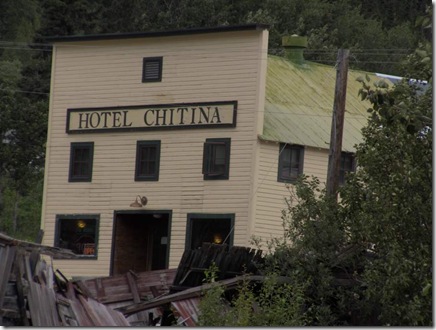
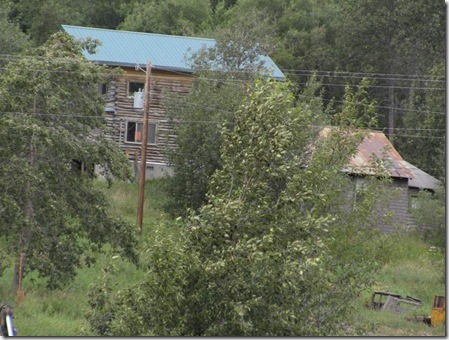
At Chitina one takes the McCarthy road. The McCarthy is a dirt road that was once the old railroad right away.
The ride on McCarthy Road

Chitina River
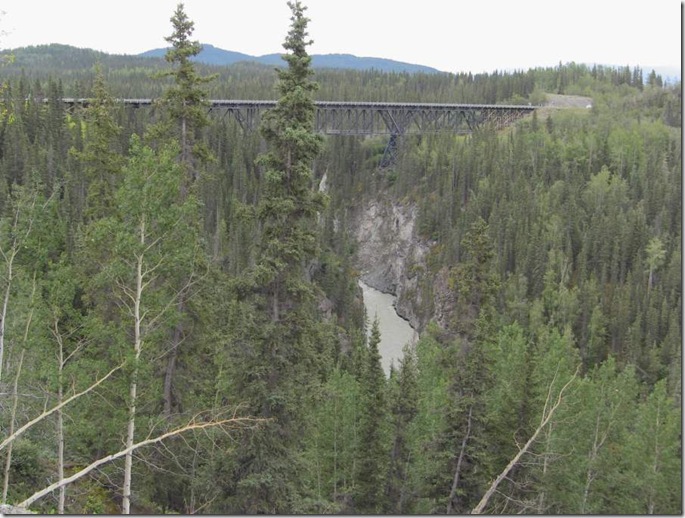
One Lane Kuskulana Canyon Bridge
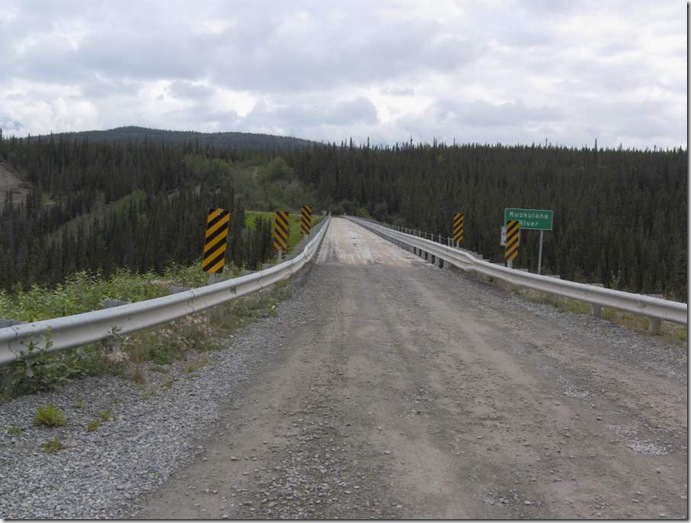
One Lane Wooden Blank Bridge
There are still old railroad spikes that surface and much of the gravel contains share stones. As we crossed the Kuskulana, we were flagged down by a stranded tour van. The tour driver asked if we could take some of their tourists to McCarthy footbridge. We had room for two, who turned out to be a Swiss couple.
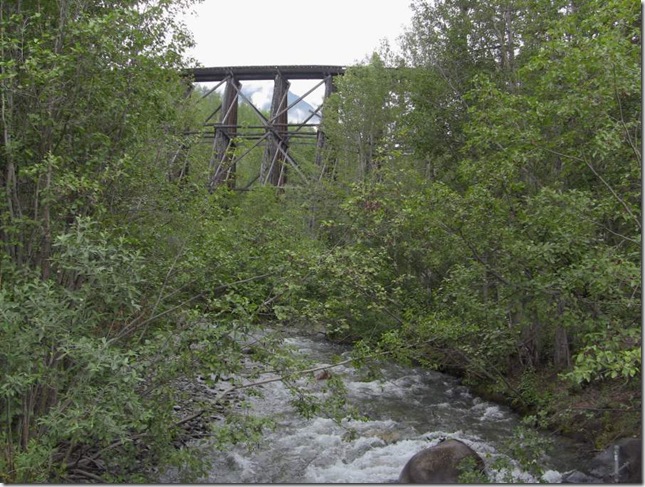
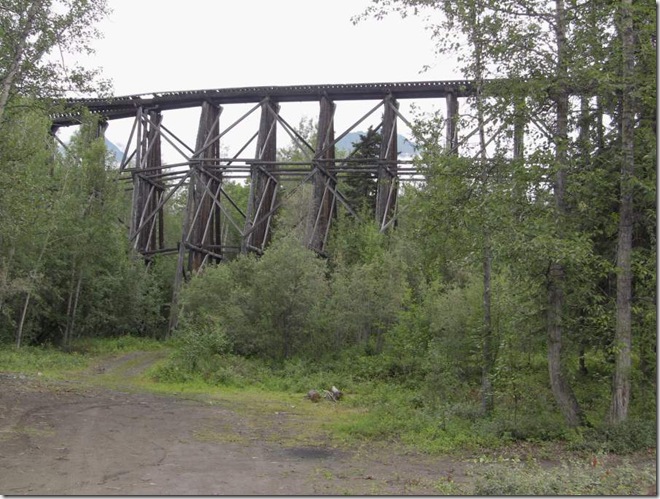
Gilahina Trestle
The trestle was originally 890 feet long and 90 feet high. It required one-half million board feet of timber, was completed in eight days in the winter of 1911. Due to the rugged landscape, over 15% of the entire railway was built on trestles like this one.
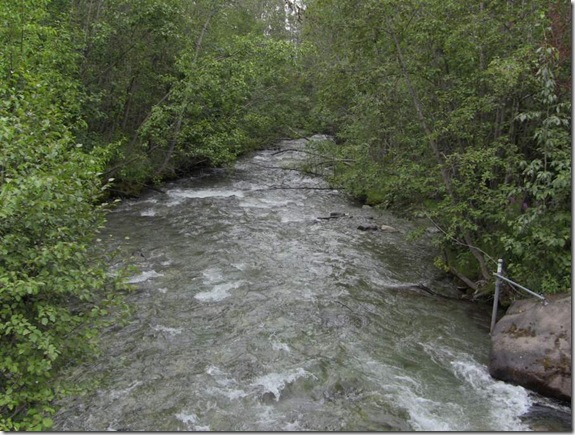
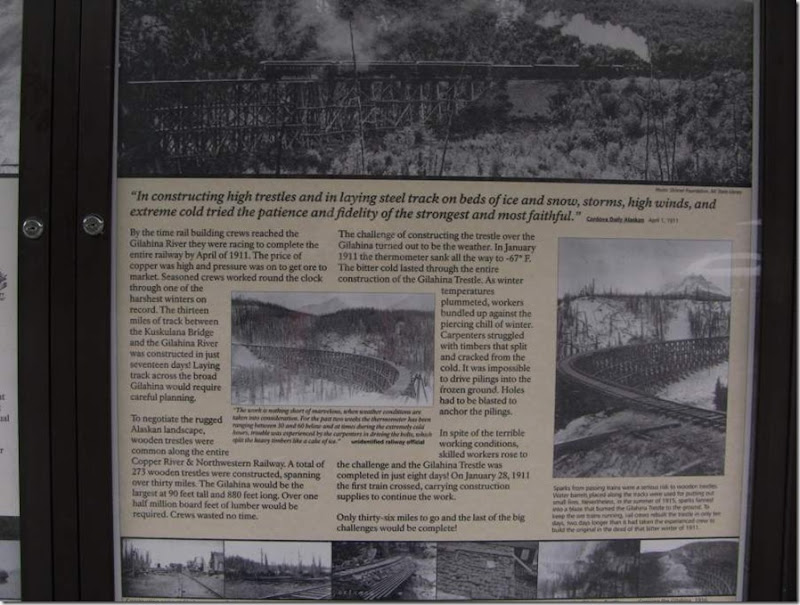
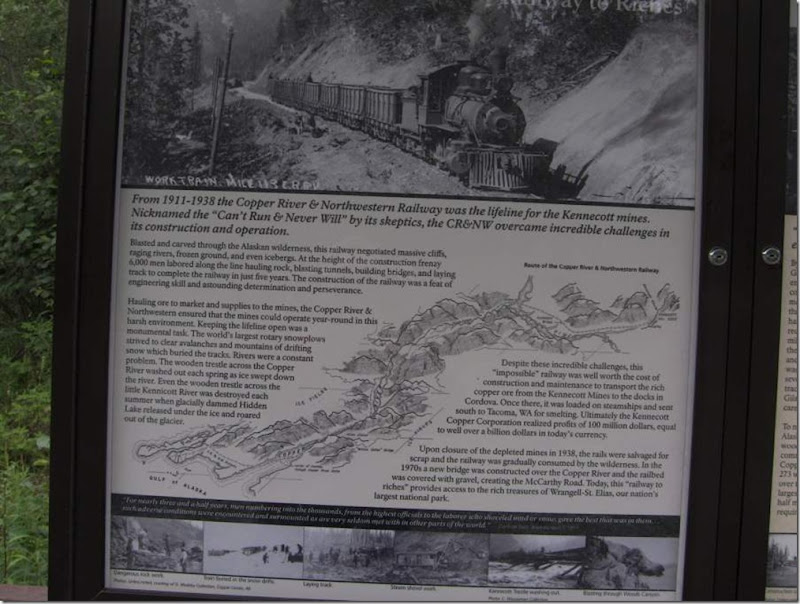
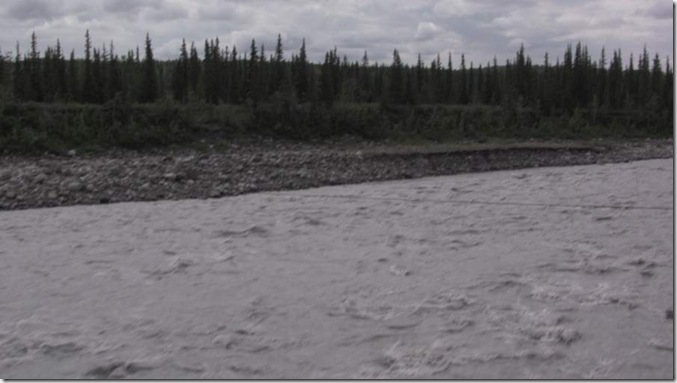
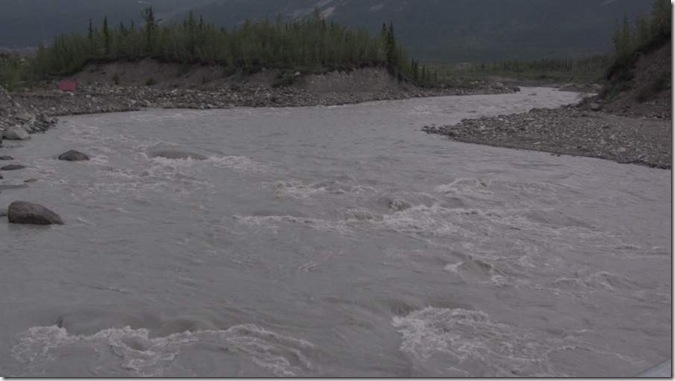
Kennicott Glacier River
The river water is a light grey and looks like watery concrete but it is not polluted. The river begins as flowing rivers of ice. Millions of tons of rock dust are soured off of distant mountains by glaciers and carried down river each year. The resulting silty waters hide salmon swimming up river to spawn. The water also hides the water paddle wheels from the salmon that natives used to catch the salmon substance for the year.
Drive to McCarthy / Kennecott video
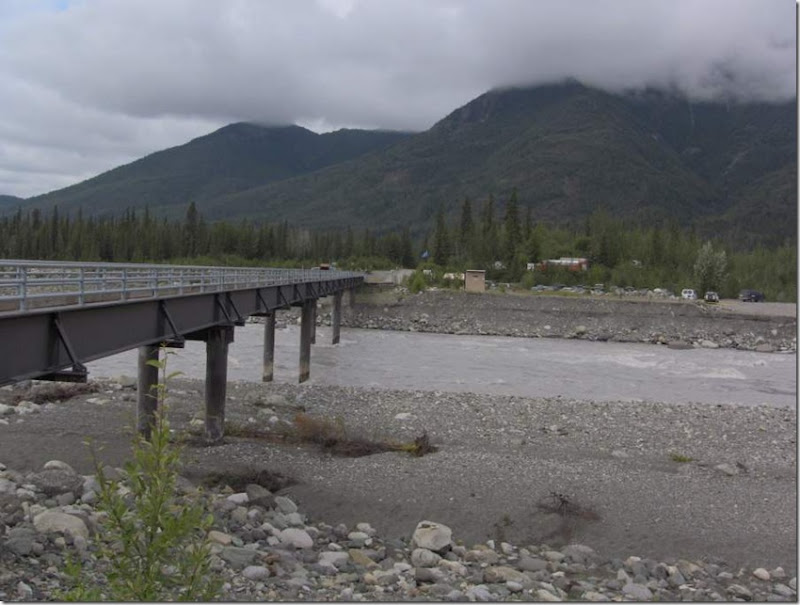
Foot Bridge to McCarthy and Kennecott
Only local residents are allowed to drive their vehicles across a privately owned bridge. Visitors must cross on the foot bridge. It is a mile walk from the other side of the foot bridge to McCarthy and five miles to Kennecott. Private companies, owned by residents of McCarthy, offer a shuttle service, $10 round trip, from the shuttle bridge to both McCarthy and Kennecott. The shuttle van runs every half hour.
Actually it works out quite well, as it preserves the openness of both places and it allows one to get the feel of life in a small community.
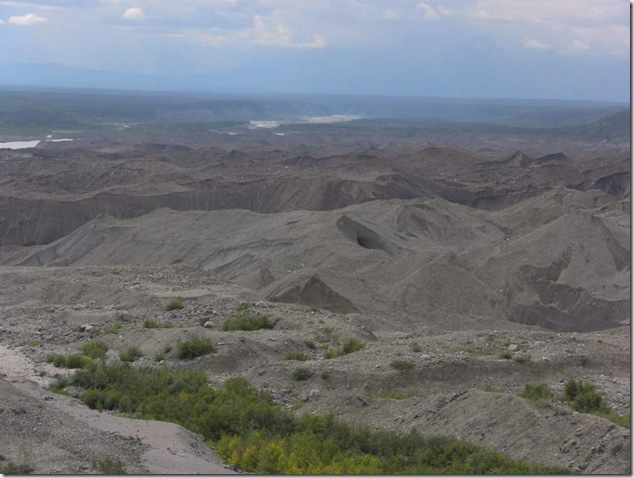
Glacier Flour left by the Kennicott Glacier
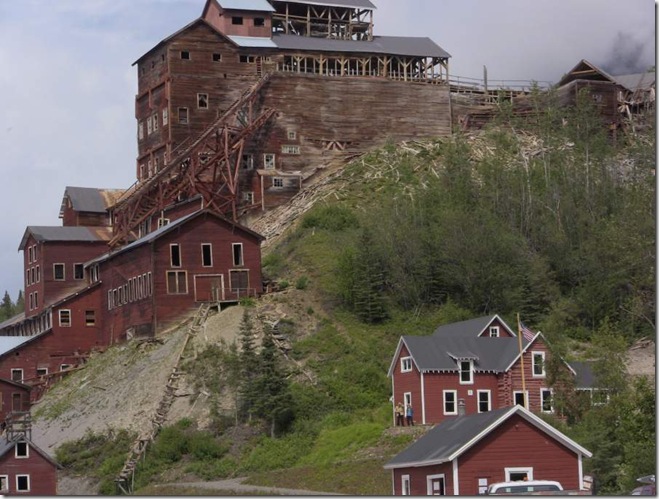
Kennicott Concentration Mill
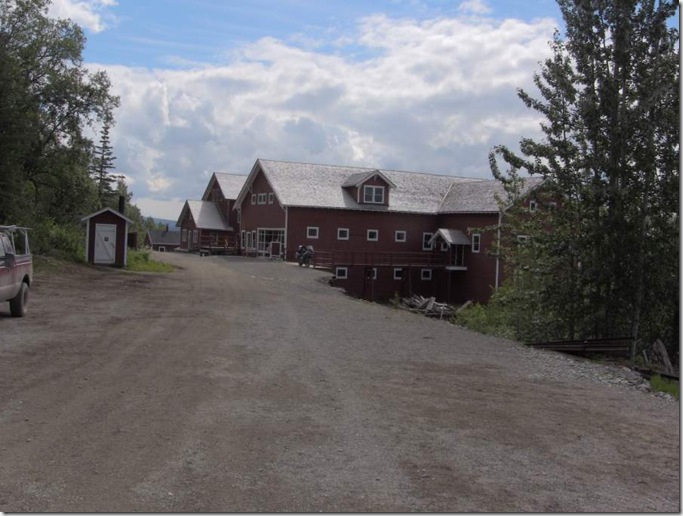
West Bunk House

Hospital, East Bunk House & National Creek Bunk House
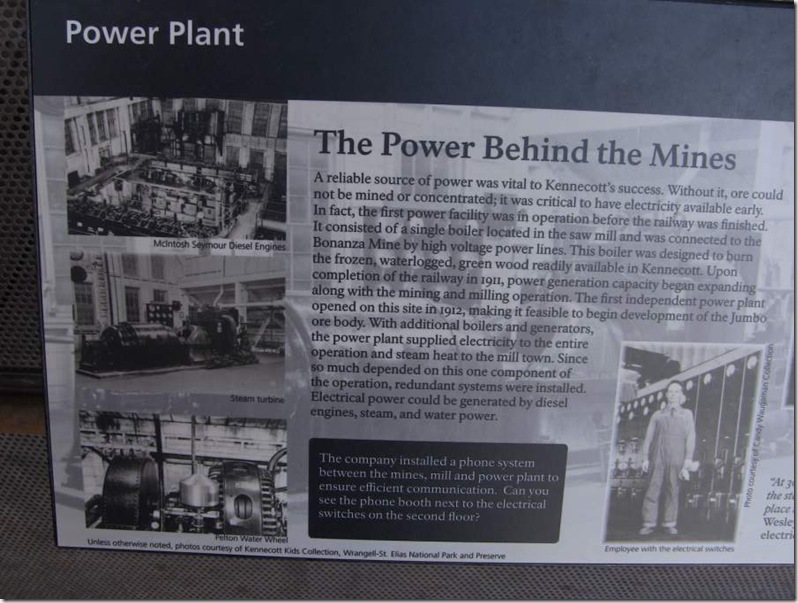
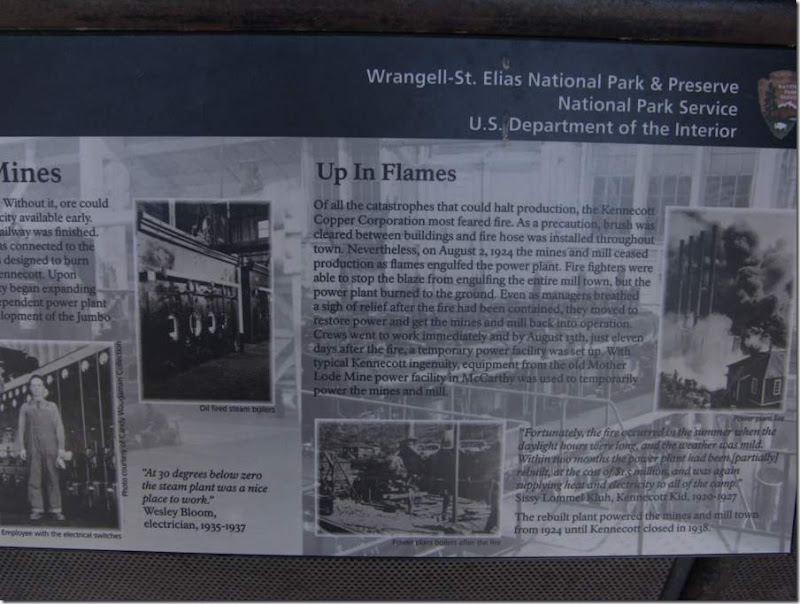
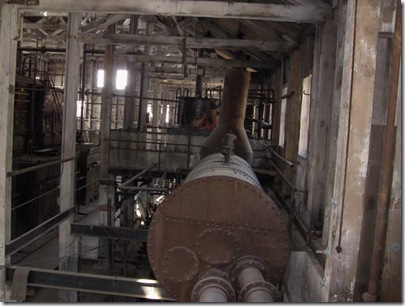
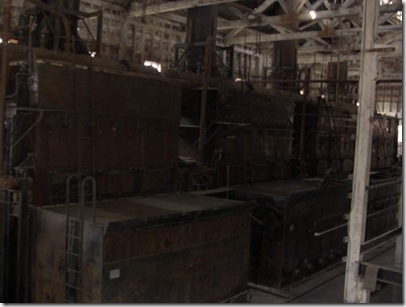
Inside the Power Plant
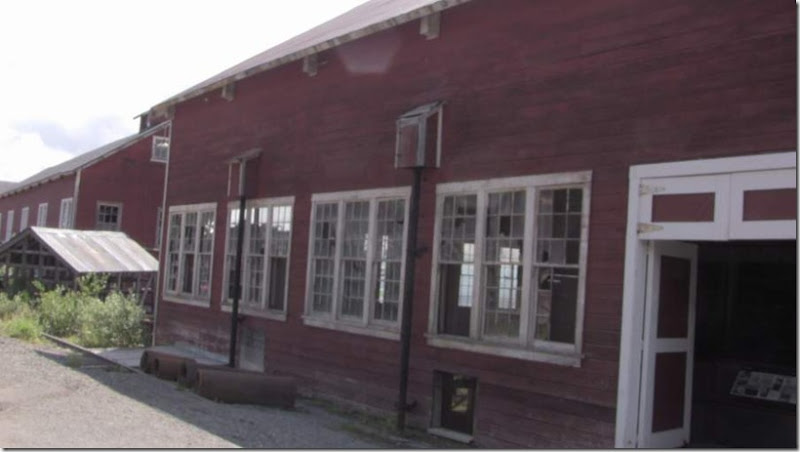
Outside Power Plant
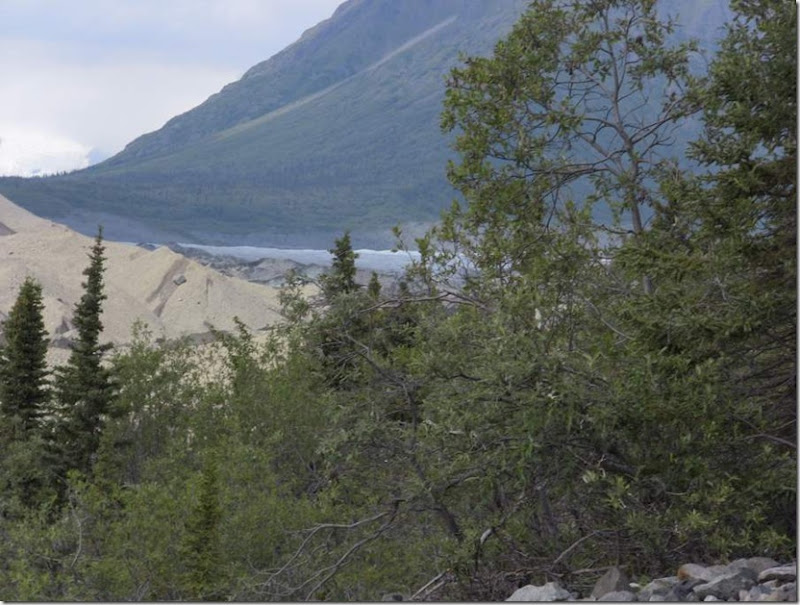
Edge of Kennicott Glacier
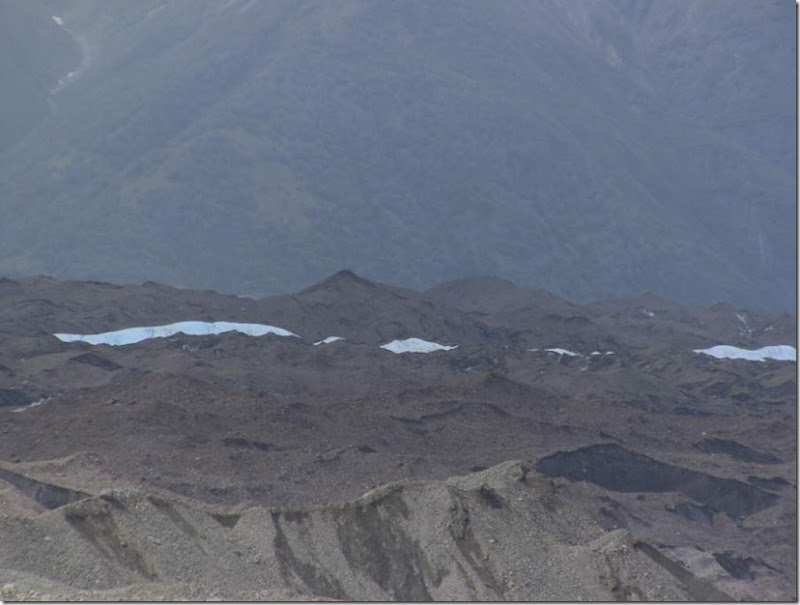
Isolated Ice from Kennicott Glacier
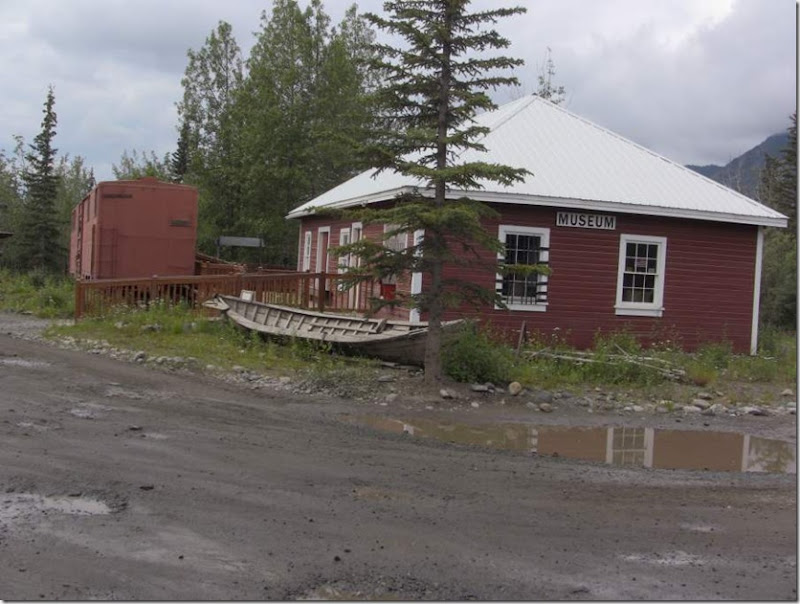
McCarty Depot – Now a museum
Kennecott / McCarthy Video
When we arrive at the parking lot for the footbridge, there were several vehicles getting tires repaired. We made it in okay but half way out we had a flat. I pulled off near another car that was sitting in a clear area off the road. He offered to help which we accepted. It turns out that he is a fisherman that was returning from fishing on the coast who lives in the McCarthy / Kennecott area. He had stopped by the “Fountain of Youth” to refill his water jugs. The “Fountain of Youth” is a spring that the local residents’ legend claims the water provides longevity. Well not only did the fisherman help change the tire; he gave us a nice salmon steak from his catch. He would not take any money for helping or the salmon. He just said that is what folks do up here, help each other out.
